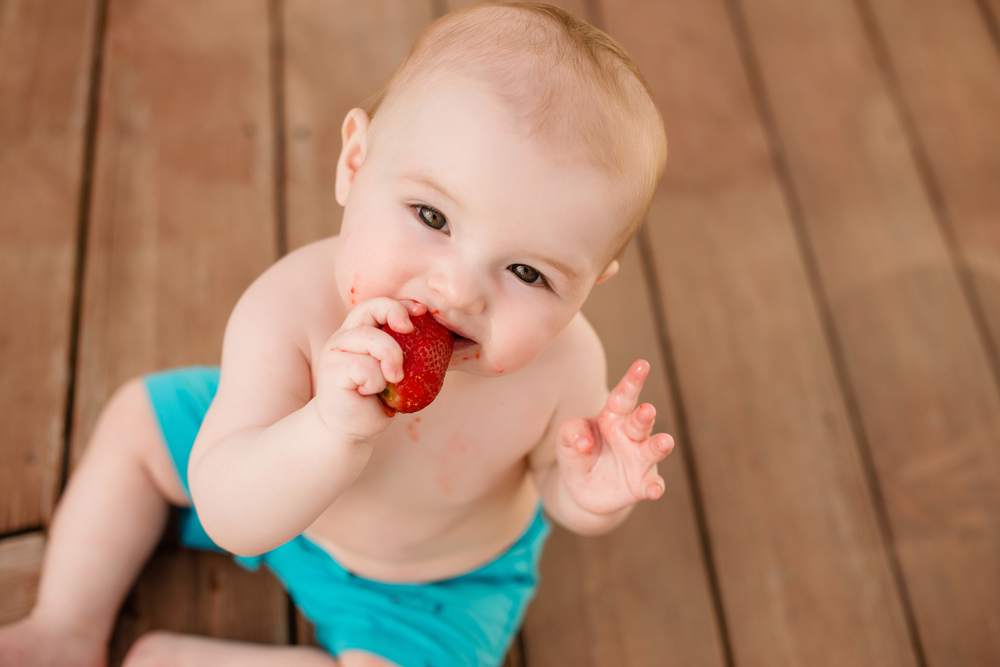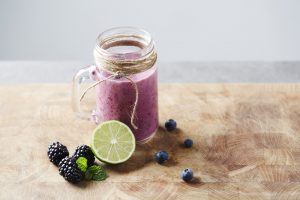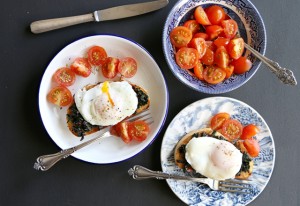All About Baby-Led Weaning: Goodbye Purées, Hello Whole Foods!

More and more parents are turning to a ‘baby-led’ approach when it comes to introducing solid foods to their baby. Gone are the days when baby food exclusively meant purées and pastes. They’ve been replaced with wholesome, healthy foods prepared so that baby can feed them to themselves.
What Exactly is Baby-Led Weaning?
Baby-Led Weaning (or BLW) is a modern approach to introducing solid foods to your baby. It’s based on the idea that babies are capable of naturally feeding themselves when they are ready. It suggests skipping the traditional spoon-feeding of thin and runny purées in favour of foods that are soft-cooked, mashed or cut into smaller manageable pieces. (Like a mashed whole egg, or a soft bread crust.) Age-appropriate foods are given to the baby who then self-feeds by deciding what, when and how much to consume.
Are You Actually Weaning?
Don’t let the ‘weaning’ part of the term scare you. In this case, it refers to the introduction of solid foods and not the actual ‘weaning’ of breast milk or formula from your baby’s diet. In fact, breast milk and/or formula should continue to be the main source of nourishment for your baby until they reach one year of age (however you can continue to breastfeed for as long as you and your child are comfortable doing so).
What is a Good Age for Baby-Led Weaning?
Health Canada recommends that babies should gradually be introduced to solid foods around six months of age. They should be able to sit up, have lost the tongue-thrust reflex (which causes the tongue to thrust forward when the back of the throat is stimulated), and are able to grab things to take to their mouths. It’s also important to follow your baby’s cues. They will let you know when they are ready to begin eating.
Do I Just Give My Baby the Food and Then Walk Away?
Here’s how BLW works:
- Have your baby join the family at the table for meals.
- Encourage them to explore the food by allowing them to pick it up with their hands. At this point, it doesn’t matter if any of the food is actually eaten.
- Food should be in a size and/or shape your baby can handle, and not a purée or runny mash, which really can’t be eaten by hand. Offer food that is easy and safe for baby to pick up and take to their mouth. Matchsticks or anything with a ‘handle’ (e.g. broccoli) is a good first food because they need to be able to close their hand around a piece of food in order to eat it.
- Allow your baby to feed themselves from the start, rather than being spoon-fed by someone else.
- Your baby will decide how much they eat and when they’re willing to try new foods.
What About Common Food Allergens?
According to Health Canada, delaying the introduction of food allergens is not recommended as a way to prevent food allergies. Common food allergens that are a source of iron, such as whole eggs (yolks and whites) can be introduced at about six months of age as long as they are properly cooked. Recent research shows that early introduction may in fact lower the chance of developing an egg allergy.
Eggs are a practical way to add an iron-rich, wholesome food to your baby’s diet. They have six grams of the highest-quality protein and fourteen essential vitamins and nutrients, such as choline, which plays an important role in brain development.
What Foods Do I Start With?
Until recently, parents were encouraged to start their babies off with iron-fortified cereal (typically rice or oat), which does not lend itself well to the self-feeding approach. In May 2014 Health Canada, Dietitians of Canada, The Canadian Paediatric Society, and the Breastfeeding Committee for Canada released new guidelines for how to feed our babies, and it is now recommended to start with iron-rich foods like meat (beef, poultry, lamb) and meat alternatives (eggs, tofu, legumes), followed by fresh fruits and vegetables and safe finger foods like grated cheese, bread crust and/or toast.
The only foods that are off limits are honey and milk, which should be delayed until after 12 months of age. Salt and sugar should be used in minimal quantities as well. One thing to keep in mind when it comes to feeding a baby is that regardless of which foods you offer first, you should only ever introduce one new food at a time in case of an allergic reaction.
Will My Baby Choke If We Try Baby-Led Weaning?
Supporters of the method argue that as long as a baby can sit upright, they should be just fine. In fact, advocates say babies are less likely to choke because they learn to chew properly from the onset and are in control of the quantity of food that enters their mouth. Babies should never be left alone when eating, and avoid giving common choking hazards like raw apples and carrots, popcorn, nuts and hotdogs.
For more information on the new guidelines and ideas on how to incorporate eggs into your baby’s diet, please click here.![]()















